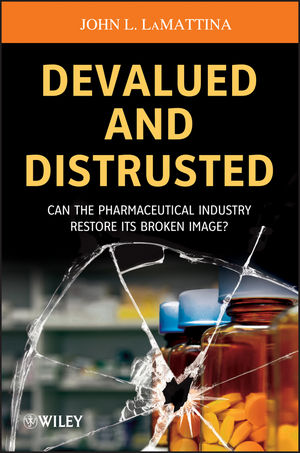Sick Insurance: Adverse Selection and Regulation of Health Insurance Markets
When heterogeneity in consumer tastes and needs, and in cost and quality of products, are publically observable, markets can price, sort, and match these variations, and product choices made by consumers yield demand signals that foster efficient resource allocation. These conditions hold, roughly, for a broad swath of economic activity, allowing lightly regulated private markets to successfully approximate allocative efficiency. However, in health care systems around the globe today, participants do not necessarily see the big picture of lifetime health costs and quality of life, and in many systems the incentives that consumers and providers face do not promote efficient allocation of health care resources. Information asymmetries are the fundamental source of difficulties in health insurance markets and in efficient provision of health services. Additional factors contributing to poor performance of health markets include (1) government regulation that is intended to protect the disadvantaged and promote equity, but creates incentives antagonistic to allocative efficiency, (2) inefficient provider organizations and non-competitive conduct, sometimes sheltered by government policies, and (3) behavioral shortcomings of consumers in promoting their own self-interest, including inconsistent beliefs regarding low-probability future events, myopia, and inconsistent risk assessment.
The seminal contributions to economic analysis of Kenneth Arrow, George Akerlof, Joe Stiglitz, Mike Spence, Mike Rothschild, and John Riley establish that when there are information asymmetries between buyers and sellers, adverse selection, moral hazard, and counter-party risk can result, causing markets to operate inefficiently or unravel. Asymmetric information between buyers and sellers, or market regulations that restrict competitive underwriting and force common prices for disparate products, can induce adverse selection. Moral hazard occurs when effort to avoid risks cannot be observed by sellers and stipulated in insurance contracts, and buyers have less incentive for risk-reducing effort when some of their potential losses are covered. When the productivity and cost of medical interventions is not known to all parties, then buyers and third-party-payers may not make informed decisions on therapies. Counter-party risk occurs when sellers evade payment of benefits for losses, or fail as agents to respect the interests of the consumers who are their principals. Adverse selection of buyers with high latent risk or low risk-reducing effort, or sellers with high counter-party risk, make insurance less attractive to buyers, and may cause insurance markets to unravel. Administrative overhead will induce less than full insurance. By itself, this does not make insurance market outcomes inefficient, but increasing returns to scale in administrative costs may lead to an inefficient concentrated market.
In principle, the problems of asymmetric information can be overcome by government operation or regulation of health services; in practice, there remains a major mechanism design problem of designing incentives that handle the asymmetries; e.g., “single payer” systems permit additional levers of control, but information asymmetries cause principal-agent problems even in command organizations. Legal mandates and regulations can make adverse selection worse. Government policy on private health insurance markets often reflects a social ethic that individuals should not be denied health care because of inability to pay, expressed for example in requirements that hospitals admit uninsured patients with life-threatening conditions, and a social ethic that insurance contract underwriting should not be based on risk factors such as gender, race, and pre-existing conditions. When these requirements are not publically financed, they are implicit taxes on insurers and providers that are at least in part passed through to consumers as higher premiums that increase the effective load for low-risk consumers. Both the higher loads and the prospect of public assistance as a last resort reduce the incentive for consumers to buy insurance and to pay (or copay) for preventative care.
The United States has, more than any other developed country, relied on private markets for health insurance and health care delivery. These markets have performed poorly. Denials and cancellations, exclusion of pre-existing conditions, and actuarially unattractive premiums have left many Americans with no insurance or financially risky gaps in coverage. Administrative costs for health insurance in the United States are seven times the OECD average. These are symptoms of adverse selection. Delayed and inconsistent preventative and chronic care, arguably induced by incomplete coverage, have had substantial health consequences: the United States ranks 25th among nations in the survival rate from age 15 to age 60. This impacts the population of workers and young parents whose loss is a substantial cost to families and to the economy. If the U.S. could raise its survival rate for this group to that of Switzerland, a country that has mandatory standardized coverage offered by private insurers, this would prevent more than 190,000 deaths per year.
Given the damage that information asymmetries can inflict on private market allocation mechanisms, the obvious next question is what regulatory mechanisms can be used to blunt or eliminate these problems. This involves examining closely the action of adverse selection and moral hazard, and the tools from principal-agent theory and from regulatory theory that can blunt these actions. There is an extensive literature relevant to this analysis that can be focused on the regulatory design question. Less well investigated are the impacts of consumer behavior, particularly mistaken beliefs. This paper examines these issues, and studies the impacts of regulations intended to promote equity and efficiency. More practically, this paper investigates these issues with reference to the private market in the United States for prescription drug coverage for seniors, introduced in 2006 and subsidized and regulated as part of Medicare.
The efficient regulatory design is mandatory universal insurance, this is the answer. But it has to be eficient, otherwise appears duplicate insurance, paying twice for the same. This is the worst second best, a combined failure of mandatory and private coverage.









